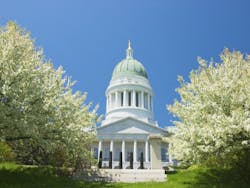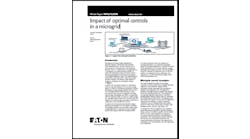The Acadia Center’s Kathleen Meil describes recent power outages in Maine that underscore the need for energy resiliency. She explains how pending microgrid legislation can help.
Kathleen Meil, Acadia Center
Of the many economic, energy, and environmental benefits of a clean, modernized community energy system, one might stand out for electric customers across the Northeast right now: resiliency.
More than 1.5 million homes lost power when hurricane-force winds and torrential rain battered New England in late October. In Maine, toppled trees blocked roads, damaged homes and cars, and pulled down power lines, contributing to outages that left nearly two-thirds of the state without power. The emergency response was hardly a picture of resilience: despite the efforts of more than 3,000 state agency and utility workers from 14 states and three Canadian provinces, it took more than a week to restore service statewide.
Neighbors rallied to keep each other warm and fed, but updating the way we plan, manage, and invest in our electric grid would give communities the freedom to do even more. Acadia Center’s Community|EnergyVision Action Guide highlights how communities can create more resilient energy systems by leveraging available technologies to generate, distribute, and use power in a cleaner, more consumer-friendly way. The Action Guide also reveals where current state rules limit—and even prohibit—community action.
New England’s recent and historic wind storm is a stark reminder that obstacles to community energy leave residents vulnerable. Power outages are inconvenient, dangerous, and expensive—and so are the workarounds many municipalities, businesses, and residents turn to during lingering blackouts.
- Sales of portable fossil-fueled generators spike, boosting profits for manufacturers and retailers, but creating safety risks for homeowners and line workers, worsening local air quality, and creating a maddening din as whole neighborhoods run noisy generators.
- Even at critical facilities like hospitals, water and sewage treatment plants, and emergency shelters, back-up generators may not be effective for extended periods. During the October storm, eight million gallons of untreated sewage flowed into the Merrimack River when back-up generators failed at a Massachusetts treatment plant.
- CMP has 30 days to provide an estimate for storm recovery costs, but in New Hampshire, where fewer than half as many customers lost power, damage is expected to top $35 million. Whatever the final tally, ratepayers will pick up most of the tab.
Communities need better, more resilient energy systems, and they deserve the freedom to access and control clean, affordable, local energy. Microgrids are a key component of this clean energy future. These self-contained power systems can combine distributed renewable generation resources with demand optimization and energy storage to serve their immediate geographical area. Microgrids can operate as part of the main electrical grid or go into “island” mode to operate separately from the grid during power outages.
Microgrids improve resiliency because they provide electrical service to a concentrated area and their generation and storage sources can be distributed across that area—with multiple rooftop solar installations, for example. This compact, yet decentralized, approach makes microgrids more rugged overall, reducing their vulnerability to the service disruptions that go along with long-distance transmission and distribution lines.
Microgrids became a focus of many state resiliency plans after Hurricane Sandy in 2012, and those on-line in Texas helped keep stores and hospitals open during Hurricane Harvey. Even in good weather, microgrids add value to a community. Vermont’s Stafford Hill solar and storage microgrid not only powers Rutland’s emergency shelter, it yields $380,000-$700,000 annually in energy storage benefits and land-lease fees.
Maine communities are ripe for microgrids, yet there is no clear authority for municipalities to act. Acadia Center’s Community|EnergyVision Action Guide notes that communities would have a clearer path if policymakers established specific rules enabling developers and stakeholders to collaborate on microgrids that enable local clean energy generation, use distributed energy storage, and improve control over energy consumption; add resilient capacity and stability to the larger grid; and operate independently at critical times.
When legislators return to Augusta in January, they will consider An Act to Enable Municipalities Working with Utilities to Establish Microgrids (LD 257). There was an informational meeting on the bill last month—just days before the majority of Mainers lost power—and there will be public hearings and work sessions in early 2018. Please join Acadia Center in sharing the impact of an outdated, inflexible power grid and demanding expanded community energy options to enhance resiliency.
Kathleen Meil is a policy advocate for the Acadia Center. This blog originated on the Acadia Center’s website and was reposted with permission.







